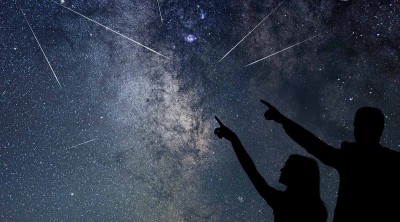What is Meteor Shower and how to watch it?

If you spot a meteor shower, what you’re really seeing is the leftovers of the icy comets crashing into Earth’s atmosphere. Comets are sort of like dirty snowballs: As they travel through the solar system, they leave behind a dusty trail of rocks and ice that lingers in space long after they leave. When Earth passes through these cascades of comet waste, the bits of debris – which can be as small as grains of sand – pierce the sky at such speeds that they burst, creating a celestial fireworks display.
A general rule of thumb with meteor showers: You are never watching the Earth cross into remnants from a comet’s most recent orbit. Instead, the burning bits come from the previous passes. For example, during the Perseid meteor shower you are seeing meteors ejected from when its parent comet, Comet Swift-Tuttle, visited in 1862 or earlier, not from its most recent pass in 1992.
That’s because it takes time for debris from a comet’s orbit to drift into a position where it intersects with Earth’s orbit, according to Bill Cooke, an astronomer with NASA’s Meteoroid Environment Office.
The name attached to a meteor shower is usually tied to the constellation in the sky from which they seem to originate, known as their radiant. For instance, the Orionid meteor shower can be found in the sky when stargazers have a good view of the Orion constellation.
How to watch?
The best way to see a meteor shower is to get to a location that has a clear view of the entire night sky. Ideally, that would be somewhere with dark skies, away from city lights and traffic. To maximize your chances of catching the show, look for a spot that offers a wide, unobstructed view.
Bits and pieces of meteor showers are visible for a certain period of time, but they really peak visibly from dusk to dawn on a given few days. Those days are when Earth’s orbit crosses through the thickest part of the cosmic stream. Meteor showers can vary in their peak times, with some reaching their maximums for only a few hours and others for several nights. The showers tend to be most visible after midnight and before dawn.
It is best to use your naked eye to spot a meteor shower. Binoculars or telescopes tend to limit your field of view. You might need to spend about half an hour in the dark to let your eyes get used to the reduced light. Stargazers should be warned that moonlight and the weather can obscure the shows. But if that happens, there are usually meteor livestream like the ones hosted by NASA and by Slooh.
Picture Credit : Google
Comments
No comments